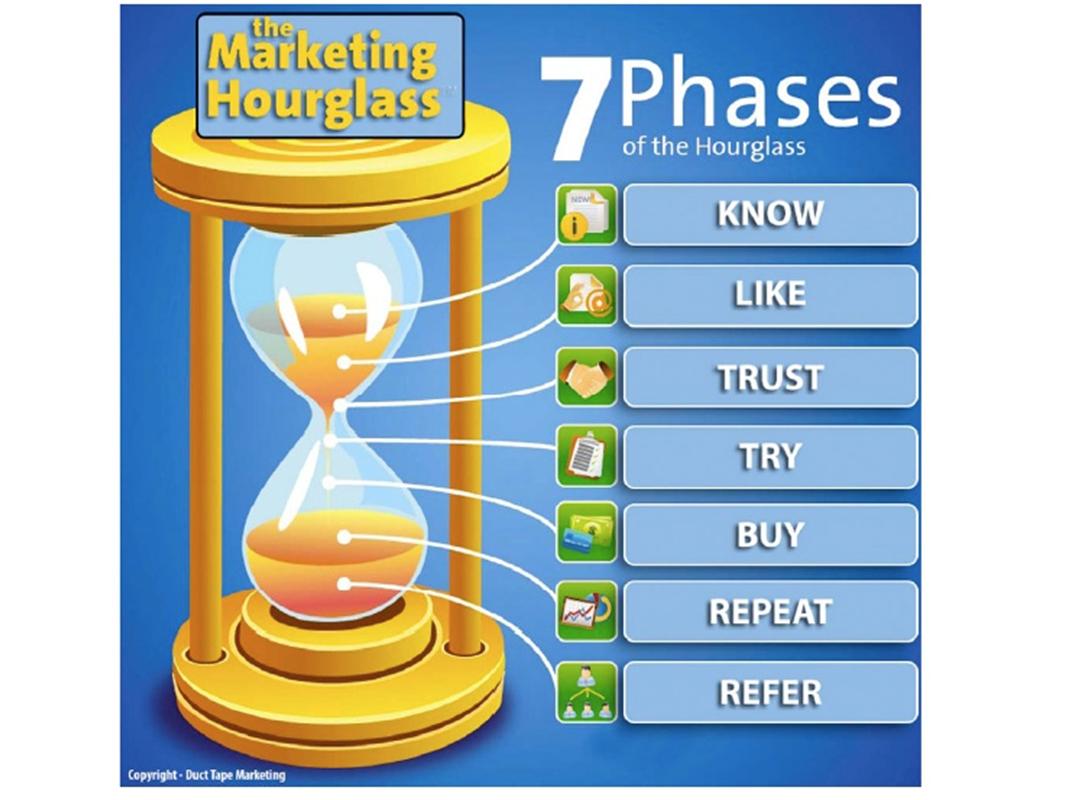The Central Role of Advertising In The Customer Journey? written by John Jantsch read more at Duct Tape Marketing
When you think of advertising, your first association might be with attracting new customers. Ads are supposed to reach out to audiences unknown, introduce them to your brand, and bring them on board.
But in reality, advertising can be used effectively throughout the customer journey. It’s not only a tool to reach prospective clients; it can also keep those you’ve already converted around for many years to come.
I’ve talked a lot in the past about the marketing hourglass, and while you’re undertaking that approach to marketing on the whole, you can incorporate advertising into each of the seven key steps along the hourglass.
Advertising to the Know and Like Crowd
Before someone ever becomes a customer, they will first need to come into contact with your brand and decide that you’re offering a product or service that’s unique and that will serve their specific needs in a way that no one else can.
If you’re looking to reach prospects, you want to target people who are similar to your current customers. It stands to reason that those who will have similar needs and wants to your current clients probably also have other similar attributes (age, location, budget, etc.).
Online advertising tools have become increasingly advanced and allow you to direct your ad spend only at those who are most likely to want to know and like your brand. Facebook offers a service called lookalike audiences, where business owners are able to upload the contact list of their current customers, and Facebook in turn identifies people with similar attributes for you to target with your ads. Google Ads offers business owners the ability to target users by geographical location and by those who are searching for specific keywords.
The key to advertising to prospects is knowing and understanding your current clients. The more data you have on them and their habits, the more likely you are to be able to hone in on a similar audience who would be more than happy to stumble across your business.
Advertising to the Trust and Try Crowd
Once someone becomes aware of your company, they move a bit further along the marketing hourglass to the trust and try stages. Here, you’ll want your advertising efforts to help users build confidence in what your brand can do, and to give them an opportunity to take what you’re offering out for a spin.
A key part of a prospect developing trust in your business is seeing you around consistently. The mere exposure effect in psychology says that people are more likely to trust someone or something that they see over and over again. Advertising across various channels (both on- and offline) will help to keep your brand front and center in prospects’ minds.
This also means that part of your advertising strategy is just about hanging in there. If you don’t see results right away from your advertising spend, don’t throw in the towel. Sure, it’s fine to tweak your approach, but scrapping the entire thing will take your business off the radar screen of those who might have been interested in giving your product or service a try if it had only popped up on their screen one or two more times.
Once prospects have seen you around and you’ve piqued their interest, they might want to take your product or service out for a test drive before committing and converting. Providing offers for free, advanced content like an eBook or access to a webinar, or giving prospects a free trial option can be the final step before converting. While I’d suggest that you take a more personalized approach to your interactions with prospects, it’s also possible to include offers in more general advertising. Just be sure that when you’re targeting specific people with personalized messaging, you’re offering something that isn’t generally available to anyone coming across your advertising.
Advertising to the Buy, Repeat and Refer Crowd
Congratulations! Your earlier advertising efforts were successful, and you’ve now gained your newest customer. But your work is far from over—now your focus needs to be on keeping the customer experience high.
Once someone has converted, your contact with them can be much more specific and personalized through other marketing channels, but it’s still possible to use advertising to keep current clients happy, have them coming back for more, and (most importantly) telling all their friends about you.
One of the most important things for creating repeat business is staying on-brand in your advertising. You’ve worked so hard to get in front of these customers and to win their trust, so you want to continue to hammer home your mission statement and keep your messaging and voice consistent so that your customers feel like they really know and understand your company. This helps to reinforce your trustworthiness, and will make those customers all the more likely to come back themselves and to become a referral engine.
You can also use these loyal customers as a part of your advertising efforts. Including testimonials from those who are already brand-loyal in your advertising campaigns can help to win over those who are still in the trust phase of the hourglass. Indeed, 70 percent of people say that they’re influenced by other consumers’ opinions shared online.
Advertising can be a powerful way to reach your customers and prospects alike. Advertising can be seen by and have an influence on people no matter where they are in marketing hourglass. Identifying the proper audience for your advertising efforts, creating a consistent message that builds trust, and staying top of mind with both prospects and current clients will ensure that you get the most out of your advertising dollars.
